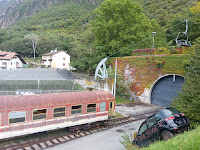We did a little hiking in Pfitschtal. There were plenty of mushrooms. I thought of my father, of how he would enjoy such a walk and how many mushrooms he would collect. Before the car incident, before his illness, in another life.
It will never happen, it would have never happened. But it was one of my most treasured childhood dreams: to go with him into the forest.
Now I almost live in a forest, just 10 minutes walk away. And still, I live in a town. It is really wonderful. And for my children, forest is something so regular like almost boring. It isn’t so fascinating for them as it was for me back then. True desires can wait until their time comes.






















